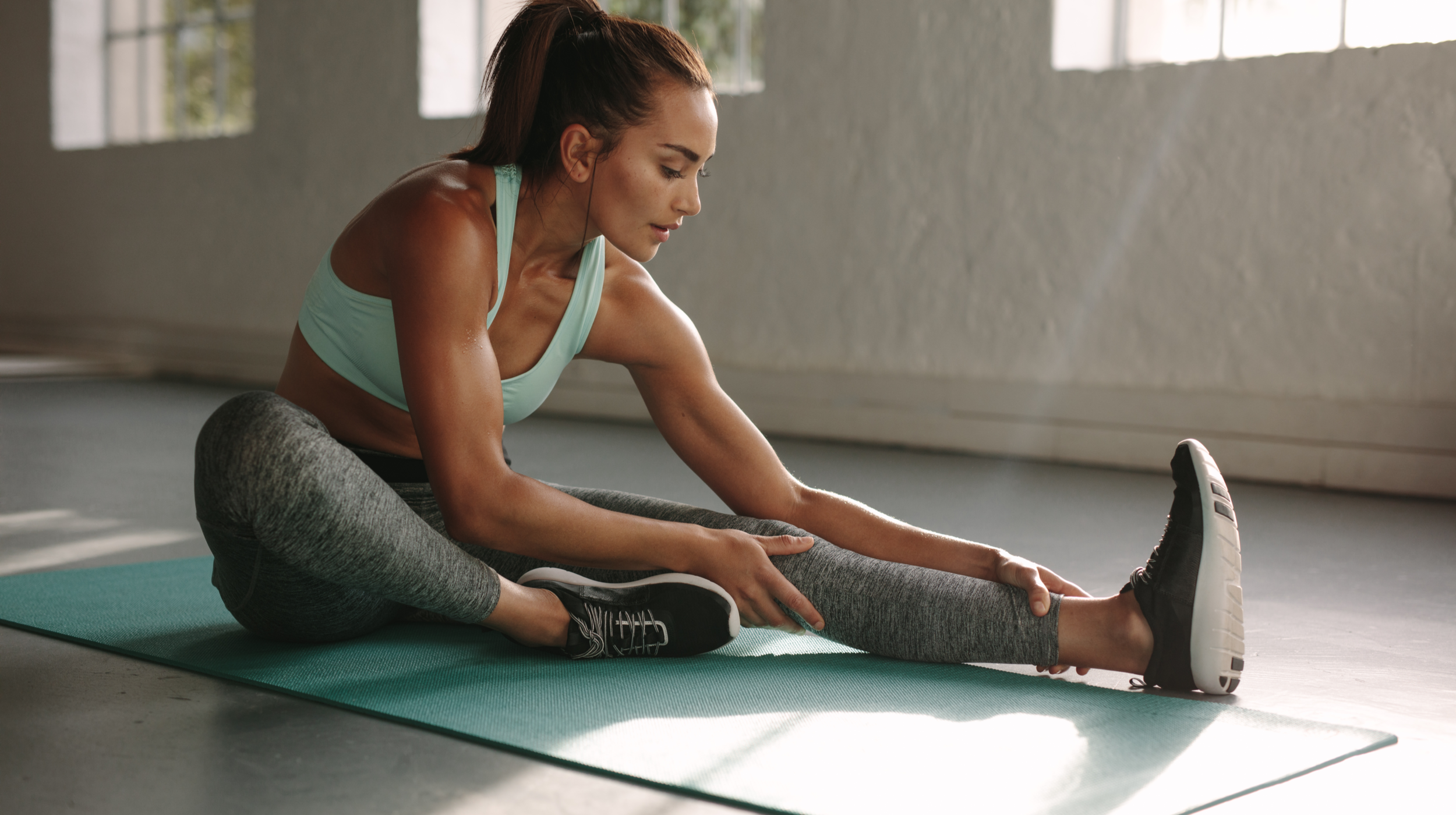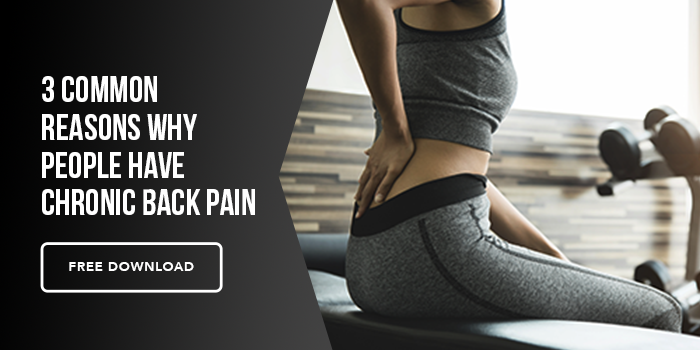Imagine you just got to the gym, and you head to the mat area to "warm-up" and stretch before your workout. Perhaps you do a static quadriceps stretch to help loosen your tight legs. Then you reach towards your toes to stretch your hamstrings, and voila, you're now ready to begin your workout and head over to the squat rack.
For some of us, this is the extent of preparing our body for movement. If this is you, you're missing out on the type of priming work that can help create a lasting impact and support your workouts for better results. I'll dive into the differences and benefits with both stretching and mobility exercises, as well as suggest how to prime your body for movement.
Let's get one thing straight before we get into the specifics of stretching and mobility. It's prevalent to see both of the terms used interchangeably in the fitness space. However, stretching and mobility do not mean the same thing. This perpetually makes it confusing for the gym-goer looking for what they should be doing before working out.
Stretching refers to a muscle's ability to lengthen, whereas mobility refers to the ability of a joint to move through its full range of motion without restriction or discomfort. Now that we know the difference let's get into what effects each practice has on your body before movement.
What is Stretching?
You might remember way back in your PE class as a kid doing stretches before hitting the track. The PE teacher would make you hold a stretch in a fixed lengthened position for at least 30 seconds, otherwise known as the common static stretch (1). As your muscles held tension and maintained the stretch, you experienced perhaps a small about of relief when you released it. But this relief was short-lived due to your nervous system directing how much stretch was "safe" for your muscle's ability to lengthen.
Static stretching is one of the most common types of stretching you will see in the fitness space, and therefore, I will place more focus on this type further in this discussion. There is both passive and active static stretching, but again more commonly, we see passive static stretching as a warm-up.
It’s also worth mentioning active and dynamic stretching. Active stretching means you are holding the stretched position actively with the opposing muscles, but its effect is short-lived. Dynamic stretching refers to using movement instead of holding a stretch and is often seen in the athletic world, but the effects are also short-lived.
Let's circle back to static stretching, which is the most common form you'll see. While stretching, your nervous system governs the amount of length and elasticity in your muscles. The amount you can lengthen your muscles is protected by what is called the stretch reflex (myotatic reflex) (2). You will feel that you can only stretch until a certain point, and then the angle of your stretch won't increase. Most people feel like they are not flexible enough due to this governing system and deem themselves inflexible.
This is due to the stretch reflex governing how much you can lengthen your muscles fibers not to tear muscle, tendon, or ligaments. This system is critical to keep us alive, help us avoid injury, and make it possible to stand upright.
When we hold a static stretch for a period of time more than 30 seconds, we experience the ability to go past this threshold and "become more flexible." We are convincing the nervous system to relax this stretch reflex to gain more muscle length, creating temporary flexibility. You might feel that your splits are getting better due to this lowering response of the stretch reflex and believe that working towards your flexibility goals makes you a better mover.
But will increasing your flexibility alone improve your exercises and increase your agility in the gym? No. Once you stand up and start moving, this short-lived flexibility won't give you the ability to use it in any activity that requires power, performance, or stability.
There lies the problem with static stretching alone, especially prior to exercise. Static stretching achieves passive flexibility without actively asking the muscles to load with this newly acquired muscle fibers' length. This is why recent research has determined that static stretching can increase the risk of injury before working out or playing sports (3). I'm not saying that flexibility is bad, but practiced alone, it lacks what will help us move and create control in our bodies. However, static stretching can be added into your routine after your workout to help inhibit the tightness in muscles and help calm down your nervous system from your workout.
What is Mobility?
Mobility has become a buzz word in the fitness space and is frequently misunderstood. As I mentioned earlier, mobility is the ability to move a joint throughout its full range of motion without restriction (4). Good mobility requires a that you have a certain level of control over your body.
Typically the application of mobility work is to increase the ranges of motion with specific mobility exercises. Mobility exercises focus on joints and positions to increase the end range of motion over time. For example, you can hold a base position like the 90/90 and use isometric contractions to increase your active range of motion for your hip joints in both internal and external rotation.
But don't we have to have some level of passive flexibility to achieve greater ranges of motion in a joint? Yes, flexibility works well with mobility, together with intending to increase your end range of motion. Practicing mobility exercises like the 90/90 requires strength and flexibility of the muscles and tissues surrounding a joint in order to achieve increased mobility.
Mobility work doesn't always look like traditional exercise. For example, imagine you're sitting in the 90/90 to increase your rear hip internal rotation (watch a video of the 90/90 here). You can contract your rear leg and create an isometric press into the ground, creating tension and using your hip internal rotators (side glutes) while lifting your rear ankle. The joint itself is also experiencing tension around the joint capsule signaling to the nervous system to increase the ability to move in this active state. Again, this might not look like much, but this signaling sticks far better than static stretching alone and can be built upon to help gain greater ranges of motion over time.
How does this apply to traditional exercise? Practicing mobility has a lasting effect on improving movement patterns and applying that to exercise. For example, suppose you are going into an overhead press and have poor shoulder mobility and stability. In that case, you might find that your upper trapezius and neck begin to overwork, and your low back arches to compensate for the movement. But if you could control your shoulder joint with an overhead press, then you would be feeling your deltoids pressing the weight overhead while keeping your spine neutral. This is not something that static stretching can fix before exercise or after.
The key concept behind mobility exercises is that they teach and demand control of your joints with strength and flexibility that come from your muscles and tissues. This, in turn, allows for you to have more effective workouts due to the joint's range of motion determining what muscles are used to perform the exercise.
Practicing mobility exercises chosen specifically to prime your body for the workout ahead is key. I take myself through each major joint before my workouts, and it becomes my warm-up. I highly suggest practicing a similar sequence to prepare your body for loading your joints in a workout.
Remember, the goal of any warm-up is to aid in what will increase the effectiveness of your exercise choice. Mobility is far more important to focus on as a priming modality prior to exercise rather than static stretching. Static stretching alone won't provide lasting flexibility or help with stabilizing your joints before exercise.
3)https://pubmed.ncbi.nlm.nih.gov/15233597/






